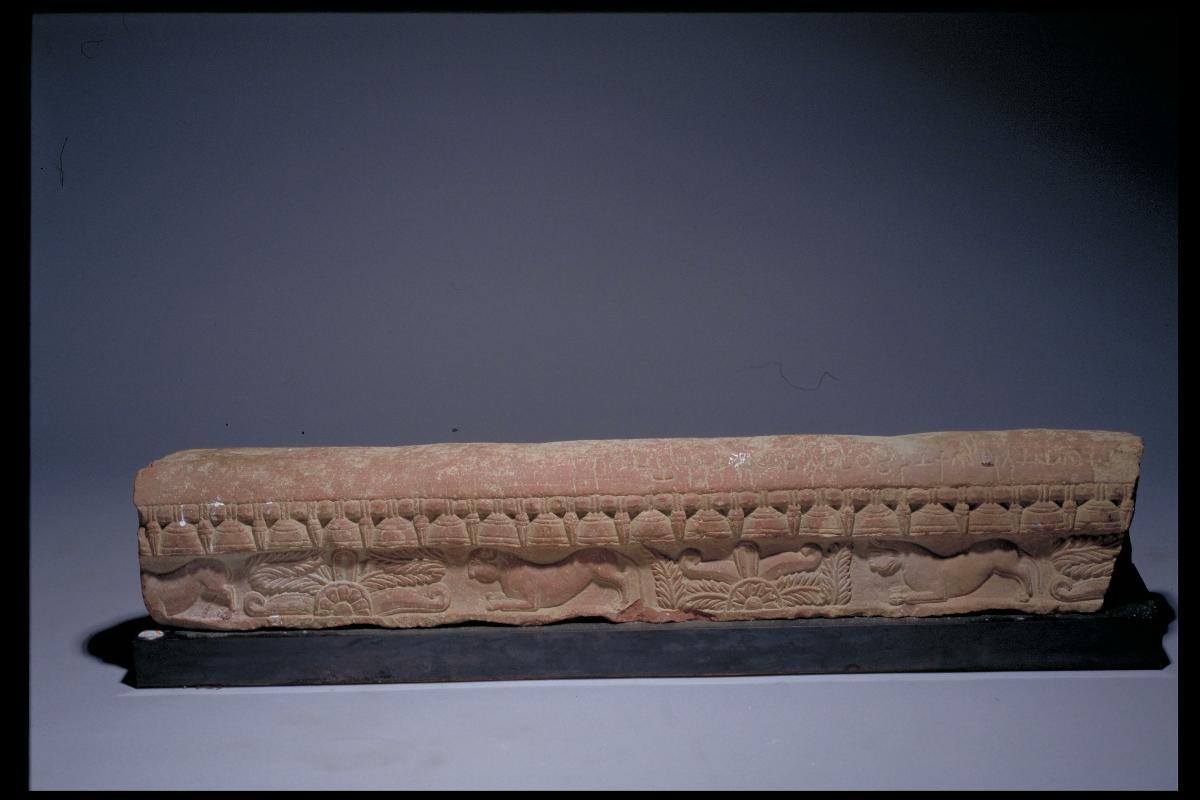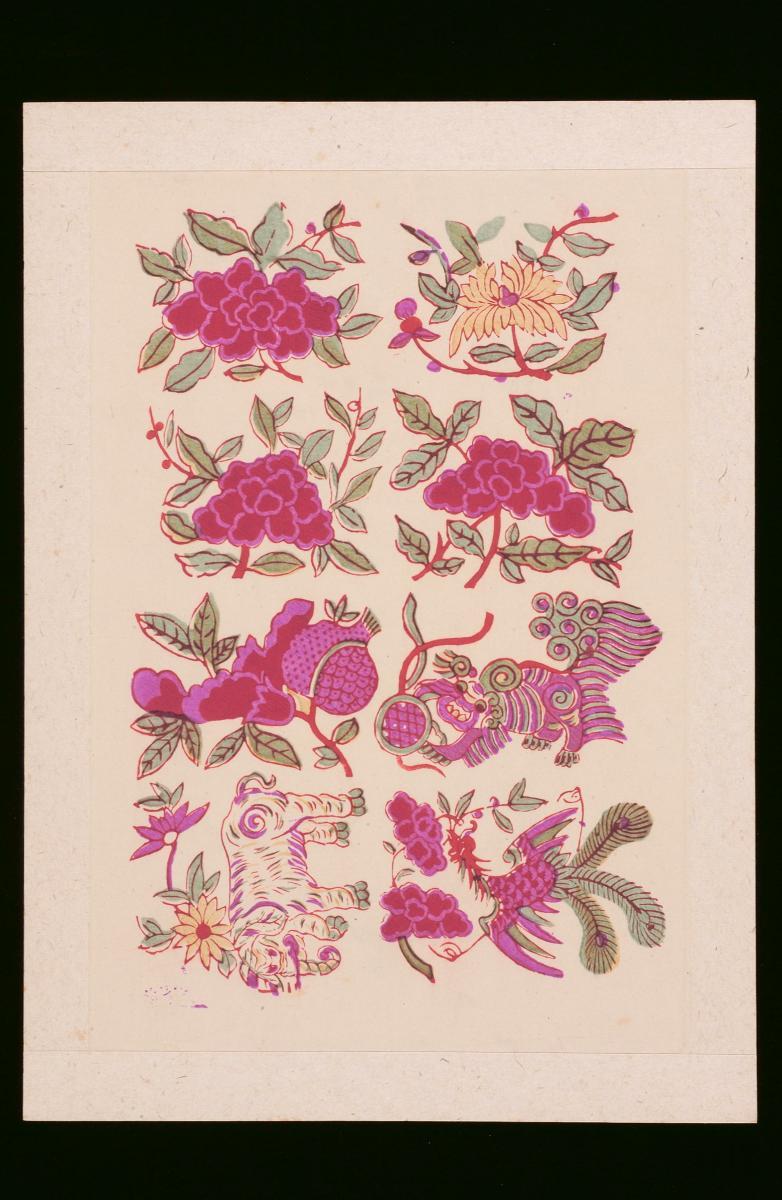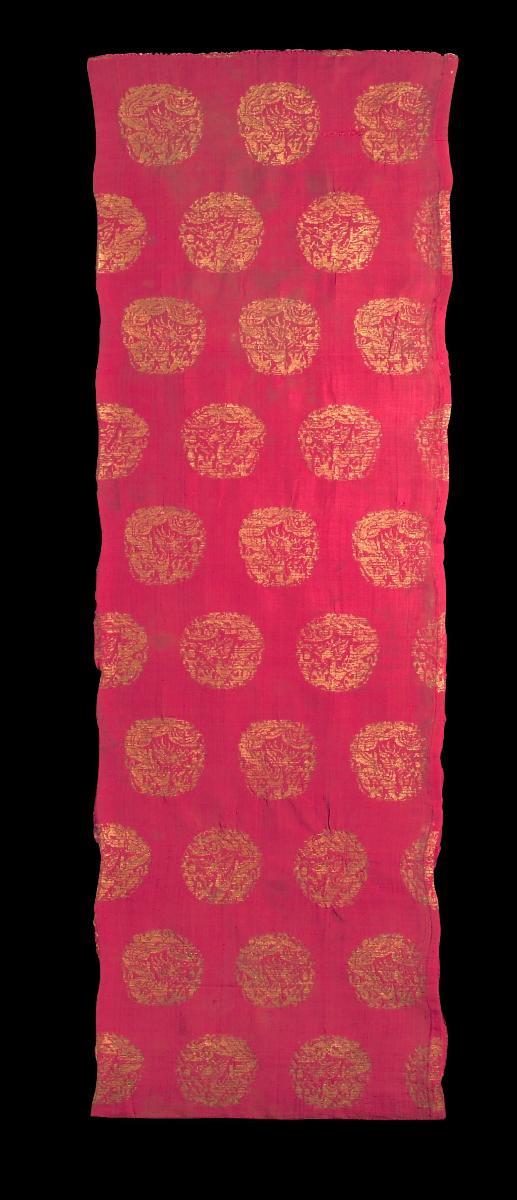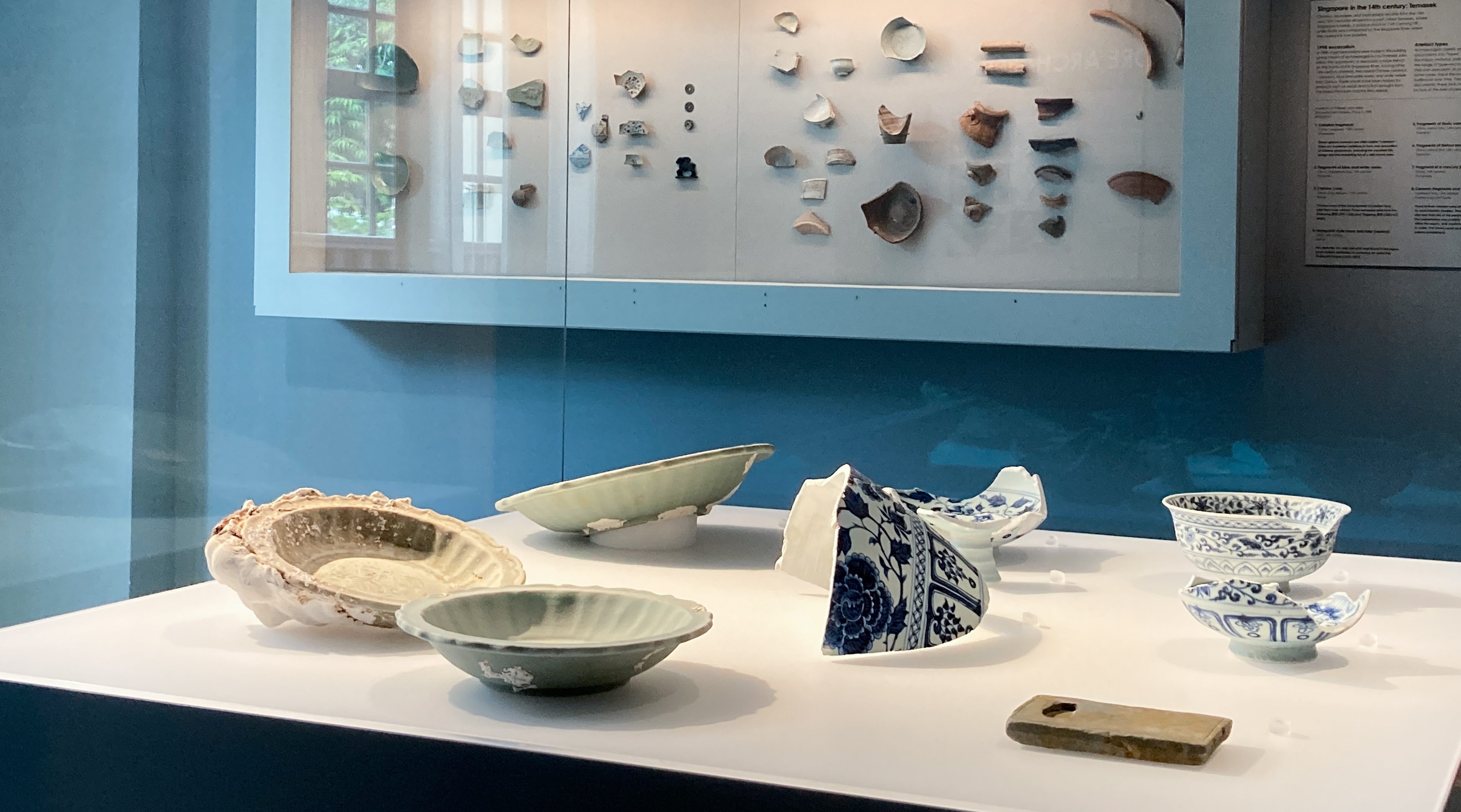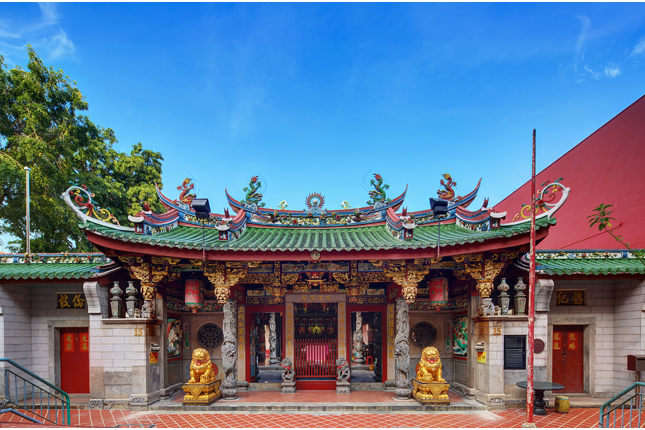This copestone is decorated with a horizontal band of honeysuckle motif (an Indian flower, nagapushpa in Sanskrit) which is also found in Sumerian, Assyrian and Greek art. On closer inspection, the floral motif alternates with prancing leonine creatures. One of the prancing animals is a lioness while the other has a human face. Device such as this is ingeniously designed by carvers to fit this narrow copestone. The fragment is rounded at the top and bears a lengthy inscription in Brahmi, an ancient Indian language. This copestone dates back to the early Shunga period (4th-2nd centuries BCE) and might have encircled a bodhi tree or a stupa railing post and bar.




